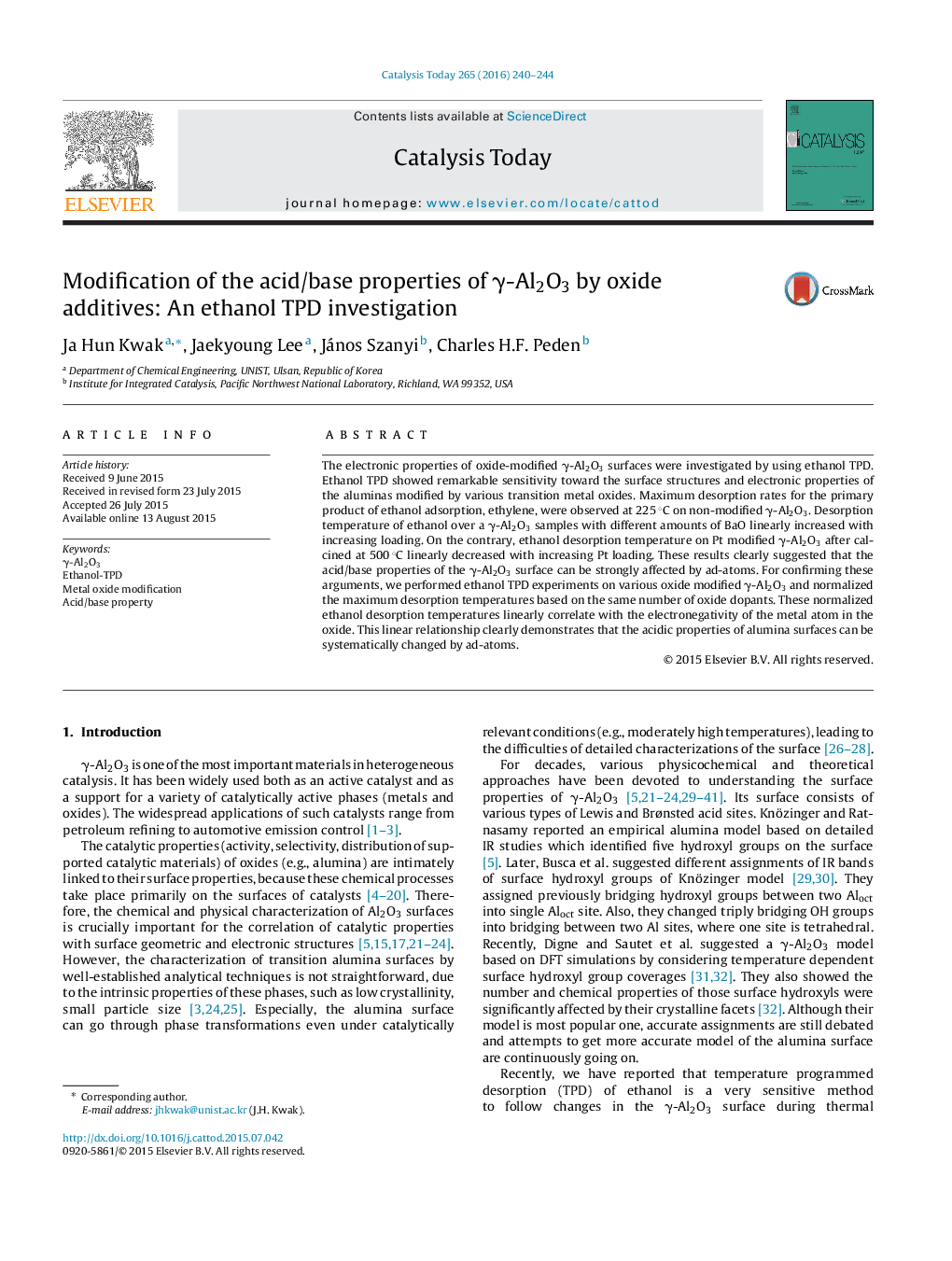| کد مقاله | کد نشریه | سال انتشار | مقاله انگلیسی | نسخه تمام متن |
|---|---|---|---|---|
| 53810 | 46984 | 2016 | 5 صفحه PDF | دانلود رایگان |
• Ethanol TPD is sensitive to electronic properties of modified γ-Al2O3 surface.
• Acid/base properties of γ-Al2O3 surface are strongly affected by ad-atoms.
• Ethanol desorption is correlated with electronegativity of ad-atoms.
The electronic properties of oxide-modified γ-Al2O3 surfaces were investigated by using ethanol TPD. Ethanol TPD showed remarkable sensitivity toward the surface structures and electronic properties of the aluminas modified by various transition metal oxides. Maximum desorption rates for the primary product of ethanol adsorption, ethylene, were observed at 225 °C on non-modified γ-Al2O3. Desorption temperature of ethanol over a γ-Al2O3 samples with different amounts of BaO linearly increased with increasing loading. On the contrary, ethanol desorption temperature on Pt modified γ-Al2O3 after calcined at 500 °C linearly decreased with increasing Pt loading. These results clearly suggested that the acid/base properties of the γ-Al2O3 surface can be strongly affected by ad-atoms. For confirming these arguments, we performed ethanol TPD experiments on various oxide modified γ-Al2O3 and normalized the maximum desorption temperatures based on the same number of oxide dopants. These normalized ethanol desorption temperatures linearly correlate with the electronegativity of the metal atom in the oxide. This linear relationship clearly demonstrates that the acidic properties of alumina surfaces can be systematically changed by ad-atoms.
Figure optionsDownload high-quality image (122 K)Download as PowerPoint slide
Journal: Catalysis Today - Volume 265, 1 May 2016, Pages 240–244
